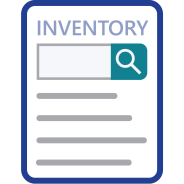
Choose from 5 options:
30 June 2022
Chemicals that are unlikely to require further regulation to manage risks to human health.
See supporting information for the list of chemicals included in the evaluation.
Evaluation is needed to provide information on human health risks.
This evaluation provides information on chemicals, listed on the Australian Inventory of
Industrial Chemicals (the Inventory), identified during the Evaluation Selection Analysis
(ESA) process as unlikely to require further regulation to manage risks to health. The ESA takes into account the intrinsic hazard of the chemical, the potential human exposure and existing risk management measures.
Based on the use category, the ESA process first sought to validate the absence of the
following hazards:
Where these hazards were identified, we considered whether the hazards would be present under the likely conditions of use, which were determined based on available information. For example, where a chemical is irritating because of its extreme pH, and the formulated product will be at a more neutral pH, the irritant property is not relevant to the product. This evaluation statement provides key information used during the ESA process including the highest use category and additional information on any factors that have contributed to risk conclusions.
During the ESA, we may also identify chemicals that are only used in laboratories in very small quantities. No evaluation of hazards was undertaken for these chemicals.
See supporting information for the highest use category identified for each chemical.
The categories used by AICIS, in order of increasing exposure, are:
Based on the available information, there are no identified risks to the public that require further regulation to manage the risk to human health. Although some of the chemicals with cosmetic and domestic uses may have potential health hazards, risks to the public are minimised by:
See supporting information for additional information on any factors that have contributed to the risk conclusions. Any requirements under poisons legislation as adopted by the relevant state or territory should be met to minimise risk.
Based on the available information, there are no identified risks to workers that require further regulation to manage the risk to health.
Although chemicals in this evaluation may meet the criteria for classification according to the Globally Harmonized System of Classification and Labelling of Chemicals (GHS) based on the highest category of use identified (see Supporting information), controls to manage the risk to workers are expected to be in place.
All requirements under workplace health and safety as adopted by the relevant state or territory should be met to minimise risk.
The conclusions of this evaluation are based on the information described in this statement.
The Executive Director is satisfied that, based on the available information for these
chemicals, identified human health risks can be managed within existing risk management frameworks. This is provided that all requirements are met under environmental, workplace health and safety and poisons legislation as adopted by the relevant state or territory.
Obligations to report additional information about hazards under Section 100 of the Industrial Chemicals Act 2019 apply.
| CAS number | Chemical name | Highest Use Category (Human Health) | Additional information |
|---|---|---|---|
| 112-47-0 | 1,10-Decanediol | Cosmetic | - |
| 584-03-2 | 1,2-Butanediol | Cosmetic | Data available on the function of the chemical indicate that it may be used in cosmetics, but only at low concentrations. |
| 623-84-7 | 1,2-Propanediol, diacetate | Cosmetic | - |
| 1331-12-0 | 1,2-Propanediol, monoacetate | Cosmetic | - |
| 2726-73-0 | 1,12-Octadecanediol | Cosmetic | - |
| 5343-92-0 | 1,2-Pentanediol | Cosmetic | Data available on the function of the chemical indicate that it may be used in cosmetics, but only at low concentrations. |
| 6920-22-5 | 1,2-Hexanediol | Cosmetic | Data available on the function of the chemical indicate that it may be used in cosmetics, but only at low concentrations. |
| 19224-26-1 | 1,2-Propanediol, dibenzoate | Cosmetic | - |
| 70955-71-4 | Phenol, 2-methoxy-, reaction products with 2,2-dimethyl-3-methylenebicyclo[2.2.1] heptane, hydrogenated | Cosmetic | Data available on the function of the chemical indicate that it may be used in cosmetics, but only at low concentrations. |
AICIS (Australian Industrial Chemicals Introduction Scheme) (2019), The Industrial
Chemicals Act 2019, Office of Chemical Safety, Australian Government Department of
Health, accessed September 2021.
AICIS (Australian Industrial Chemicals Introduction Scheme) (n.d.), The Australian Inventory of Industrial Chemicals (Inventory), Office of Chemical Safety, Australian Government Department of Health, accessed September 2021.